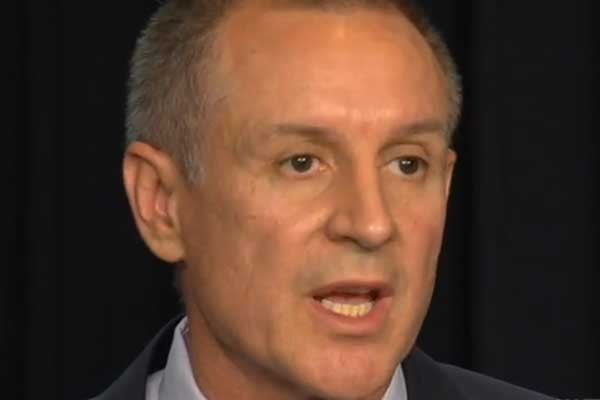Is it time for nuclear energy for Australia
Post on: 11 Июнь, 2015 No Comment

Is it time for Australia to embrace nuclear energy? Many in Australia would say the answer is a resounding “No!”. After all, Australia is richly endowed with non-nuclear energy resources. But it really…
Stefaan Simons
If Australia wants low emissions and energy security, its time to talk about nuclear. Drew Bandy
Is it time for Australia to embrace nuclear energy? Many in Australia would say the answer is a resounding “No!”. After all, Australia is richly endowed with non-nuclear energy resources. But it really depends on what our objectives are for Australia’s energy sector.
Governments around the world are trying to balance the “trilemma” of providing their nations with security in energy supply, maintaining economic growth and mitigating their impacts on climate change by reducing carbon emissions. Australia, despite its ample resources, is no different.
Including nuclear energy in the low-emission energy mix could provide opportunities for all three. Certainly, nuclear energy is proven to be consistent and reliable, with a levelised cost of electricity similar to that of the lowest cost renewable forms of energy, because of its reliability (it can provide electricity 85-90% of the time compared to, say, wind, at 25-30%).
A market-determined mix of nuclear and renewables could provide energy security in a carbon constrained economy, along with up to 55,000 new jobs for Australia.
If Australia was to build, operate and maintain a nuclear energy industry, it would require significant investment in education and training to develop a highly skilled workforce with an ingrained safety culture.
The spin-offs, however, could be significant: new investment in mining operations, service industries and advanced manufacturing.
To maintain energy security, investment in uranium conversion and enrichment facilities would allow Australia to fuel its domestic nuclear energy market. This would result in hundreds of further jobs and add value to a resource that currently is supplied to the international market as yellowcake at only around half of the potential fuel value.
The complexities of the international market may make it hard to justify domestic conversion and enrichment facilities on export grounds alone, but indirect economic benefits and energy security are another matter.
This brings us to climate change. Australia has set itself an unconditional target of reducing carbon emission to 5% below 2000 levels by 2020. Our longer-term, more ambitious target, is 80% below 2000 levels by 2050. Australia was expected to achieve the former with a combination of domestic emission reductions primarily through a carbon price, and the purchase of overseas abatement credits.
Whether it will achieve even the modest near-term target remains to be seen. Scenarios to achieve the longer-term target are heavily reliant on the large scale deployment of carbon capture and storage (CCS) on coal-fired power stations. However, to date, no such facilities exist anywhere in the world.
The general indication is that economically viable carbon capture is still a long way off, if achievable at all, and that it may well be only viable for a limited number of sites. So, if that is the case, what options are we left with?
It should be noted that the above targets were set based on a 2°C global average temperature rise. It is now widely accepted that we have already missed that boat. What should be our next target? 4°C? 6?
Whatever we choose will result in greater economic hardships for all in the future. Adaptation plans are now being formulated – but adaptation will cost more in the long run than mitigation.
Certainly we need to transition away from fossil fuels. However, it is difficult to see how a 100% renewable energy system could be achieved, given our current demands for energy and the migration of the human population to urban environments with very large energy footprints. It’s widely acknowledged we will need renewables and nuclear in order to meet the 80% target.
Nuclear energy would displace coal burning power plants with significant carbon emission savings. In Australia, having 10 to 25 GWe nuclear energy capacity would remove one to three-quarters of Australia’s total electricity-related carbon emissions. The remainder could be avoided with renewable energy and energy demand reduction measures.
Such a transition will require policy certainty to encourage the necessary long-term investment. University College London’s International Energy Policy Institute (IEPI), based at its Australia campus in Adelaide, undertakes economic, regulatory and policy research on how Australia could develop a nuclear energy industry and manage its externalities, including decommissioning and waste.
The Institute is considering whether markets are impeding the effectiveness of energy-sector policies designed to mitigate climate change through long-term investment in low-carbon technologies.
Price “signals” are intended to encourage investment in new capacity, but long-term investment decisions appear to conflict with the short-term (even instantaneous) nature of the market and may impede the effectiveness of climate policies. Measured policy interventions could be required for nuclear power to develop in Australia.
We suggest long-term feed-in contracts and Government-backed loan guarantees that share the risks between the investors and consumers: these would result in a net welfare gain for the community.
Stefaan Simons is presenting this week at the ATSE conference, Nuclear energy for Australia. being held in Sydney on 25 and 26 July.
Republish this article
We believe in the free flow of information. We use a Creative Commons Attribution NoDerivatives license, so you can republish our articles for free, online or in print.














